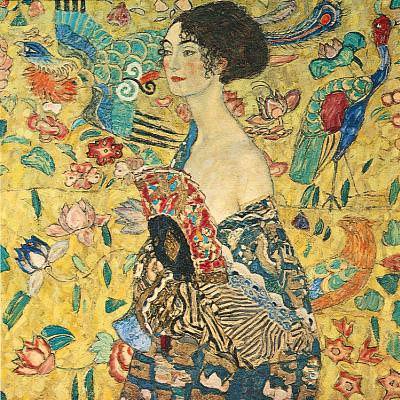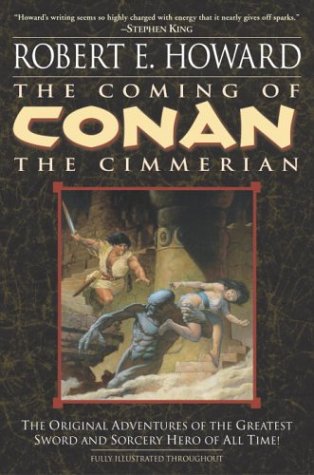Poem: Quiet Contemplations in my Hometown Church o...
The 5 Most Addictive Arcade Games
The One That Got Away: Part One
5 Questions About: Movie Reviews
Gerry Ludwig Has a Mental Breakdown in the Express...
Reading Moby-Dick: Part Five
5 Questions About: 007
How to be an Office Drone
Under God's Right Arm: Pesky Dinosaurs
Literary Criticism
Fantastically Bad Cinema
Essays
Under God's Right Arm
June 2006
July 2006
August 2006
September 2006
October 2006
November 2006
December 2006
January 2007
February 2007
March 2007
April 2007
May 2007
June 2007
July 2007
August 2007
September 2007
October 2007
November 2007
December 2007
January 2008
February 2008
March 2008
April 2008
May 2008
June 2008
July 2008
August 2008
September 2008
October 2008
November 2008
December 2008
January 2009
February 2009
March 2009
Alcoholic Poet
Baby Got Books
Beaman's World
BiblioAddict
Biblio Brat
Bill Crider's Pop Cultural Magazine
The Bleeding Tree
Blog Cabins: Movie Reviews
A Book Blogger's Diary
BookClover
Bookgasm
Bookgirl's Nightstand
Books I Done Read
Book Stack
The Book Trib
Cold Hard Football Facts
Creator of Circumstance
D-Movie Critic
The Dark Phantom Review
The Dark Sublime
Darque Reviews
Dave's Movie Reviews
Dane of War
David H. Schleicher
Devourer of Books
A Dribble of Ink
The Drunken Severed Head
Editorial Ass
Emerging Emma
Enter the Octopus
Fatally Yours
Flickhead
The Genre Files
The Gravel Pit
Gravetapping
Hello! Yoshi
HighTalk
Highway 62
The Horrors Of It All
In No Particular Order
It's A Blog Eat Blog World
Killer Kittens From Beyond the Grave
The Lair of the Evil DM
Loose Leafs From a Commonplace
Lost in the Frame
Little Black Duck
Madam Miaow Says
McSweeney's
Metaxucafe
Mike Snider on Poetry
The Millions
Moon in the Gutter
New Movie Cynics Reviews
Naked Without Books
A Newbie's Guide to Publishing
New & Improved Ed Gorman
9 to 5 Poet
No Smoking in the Skull Cave
Orpheus Sings the Guitar Electric
Polly Frost's Blog
Pop Sensation
Raincoaster
R.A. Salvatore
Reading is My Superpower
Richard Gibson
SciFi Chick
She Is Too Fond Of Books
The Short Review
Small Crimes
So Many Books
The Soulless Machine Review
Sunset Gun
That Shakesperherian Rag
Thorne's World
The Toasted Scrimitar
This Distracted Globe
Tomb It May Concern
2 Blowhards
Under God's Right Arm
A Variety of Words
The Vault of Horrr
Ward 6
When the Dead Walk the Earth
The World in the Satin Bag
Zoe's Fantasy
Zombo's Closet of Horror
Bookaholic Blogring
Power By Ringsurf
Analysis: Frank R. Stockton’s “The Lady, or the Tiger?” always conjures up the Grateful Dead song “Terrapin Station.” In the song, a lady tosses her fan into a lion’s den. She bids a sailor and a soldier to fetch it; promising her eternal love to the one who succeeds. The soldier declines, but the sailor boldly retrieves the fan and the lady leaps into his arms. The song narrator asks the listeners to decide if the sailor made the wise choice.
“The story teller makes no choice. Soon you will not hear his voice.
His job is to shed light, and not to master.
Since the end is never told, we pay the teller off in gold,
In hopes he will return, but he cannot be bought or sold.”
Obviously, the song reflects the short story, which was written in 1882. But the song asks the reader to make the final moral judgment and that’s exactly what 
There is one word of dialog in the story: “Which?”
This is the question asked by the suitor to the princess as he stands before the two doors in the arena. It is this question that forms the foundation of
On the surface, the story hinges on the princess and her horrible situation (a “Catch-22” before Joseph Heller was even born). She can tell her suitor to pick the door with the tiger and watch him get torn to shreds and devoured or she can picked the door with the lady and watch her true love be wed to one of the women of her court. In either case, she never gets to see him again.
The princess is acquainted with the lady behind the door – a beauty from her court. We know that the princess is a jealous woman and in the past has “seen, or imagined that she had seen, this fair creature throwing glances of admiration upon the person of her lover, and sometimes she thought these glances were perceived and even returned.” She also “hated the woman who blushed and trembled behind that silent door.”
Yet, she also loves her suitor and the thought of him being mauled by a starving tiger makes her mad with despair. “How often, in her waking hours and in her dreams, had she started in wild horror, and covered her face with her hands, as she thought of her lover opening the door on the other side of which waited the cruel fangs of the tiger!”
Her suitor knows instantly that the princess has discovered the secret of this particular test and that’s when he mutters:
“Which?”
“Her right arm lay on the cushioned parapet before her. She raised her hand, and made a slight, quick movement toward the right. No one but her lover saw her. Every eye but his was fixed on the man in the arena. He turned, and, with a firm and rapid step he walked across the empty space. Every heart stopped beating, every breath was held, every eye was fixed immovably upon that man. Without the slightest hesitation, he went to the door on the right, and opened it.”
But the reader never learns the answer. Instead, 
Are we cynic or optimist? Are we glass half full or glass half empty? Are we romantics or melancholy pessimists? Do we believe human beings are inherently good or evil?
This is why the short story has become a staple in high school literature classes. The answer is at once intimate and a telling gauge of our own public perspective. It can open up lively classroom discussions and reveal the power of the written word. But the real magic of
And that’s why I see the trusting lad opening the door and…
Well, let me turn to the Grateful Dead for my answer: “A door within the fire creaks; suddenly flies open, and a girl is standing there.”
Read our literary criticism of Robert Louis Stevenson's "Dr. Jekyll & Mr. Hyde"
Labels: Frank Stockton, literary criticism, literature
 StumbleUpon |
StumbleUpon |
 del.icio.us |
del.icio.us |
 Technorati |
Technorati |

This work is licensed under a Creative Commons Attribution-No Derivative Works 3.0 License.
The Template is generated via PsycHo and is Licensed.




